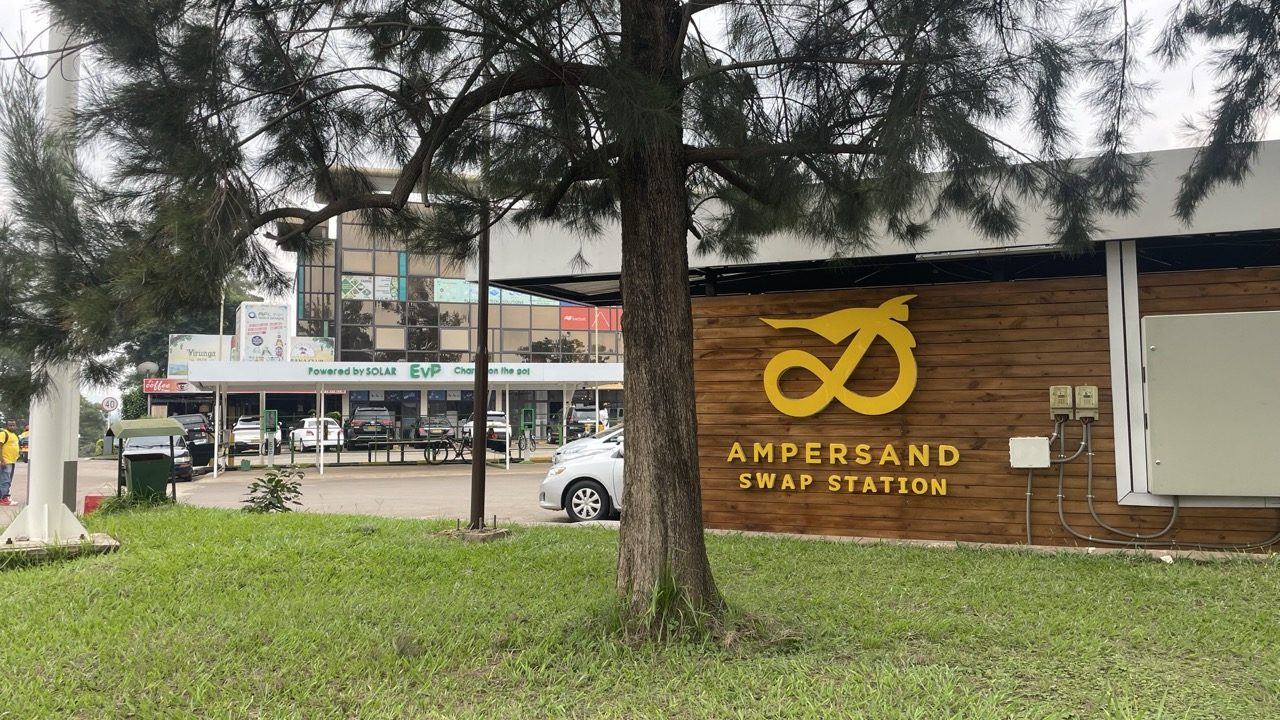A transport revolution is underway in Africa. Governments, private institutions, entrepreneurs, and innovators, continuously explore the possibilities of sustainable mobility. Despite the lower penetration rate of EVs (electric vehicles) in Africa, the tide is changing as more countries integrate eMobility into their climate action plans. In collaboration with NTCS GreenBee, we will dive deeper into the state of African eMobility and the opportunities it holds.
In East Africa, particularly Kenya and Rwanda, over 50 startups are actively contributing to various facets of eMobility. Notable players such as Roam Electric, BasiGo, Ampersand, Kabisa REM, Spiro, Gogo Electric, and Zembo are applying their technology and business models to unique challenges and opportunities. Market demand for eMobility solutions in Africa is distinct, focusing primarily on income-generating use and electrifying fuel-powered vehicles. These demands are being explored through interesting business models, including battery-swapping, pay-per-use, and group leasing, making EVs more affordable, more accessible, and more visible.
According to Mordor Intelligence, Africa’s electric vehicle market could reach € 19,65 billion by 2027, compared to a size of € 10,97 billion in 2021. When focusing on motorcycles, the market is expected to grow from € 3,35 billion to € 4,66 billion in the same timeframe. Aiding development, countries like Egypt, South Africa, Uganda, and Rwanda are running several government-supported pilot projects for sustainable vehicles.
Growing emphasis
Across the continent, Nigeria is among the countries leading the eMobility transition. Recently, Metro Africa Xpress Inc., a Nigerian eMobility platform and electric vehicle assembler, raised € 28,5 million with support from the UK-funded Manufacturing Africa programme to expand their assembly line with electric two- and three-wheelers. Senegal and Sierra Leone have emerging EV markets, with Senegal focusing on regulatory frameworks and Sierra Leone showcasing a diversity of EV types but lacking policy support. West Africa presents a complex landscape, characterized by economies heavily reliant on oil and varying degrees of political stability. Nigeria’s extensive fuel subsidies have historically influenced neighbouring states, diminishing interest in e-mobility and promoting the use of fossil fuel-based power generation. Moreover, the region’s adoption and regulation of two-wheeled (2W) vehicles are diverse and fragmented: motorcycle taxis are prohibited in major Nigerian cities and throughout Ghana, whereas scooters are abundant in Francophone nations but scarce elsewhere.
Kenya, East Africa’s powerhouse, has an estimated 40 eMobility startups according to the African eMobility Alliance (AFEMA), having attracted € 47,7 million in capital finance to date, which is the highest amount in Africa. Although on the contrary, the country currently has only 350 EVs on its roads. This number stands in sharp contrast, as Tanzania already has at least 5,000 EVs but just 11 eMobility businesses, with a total funding raised to date of just under € 1 million. In terms of eMobility, Rwanda has roughly 900 EVs on the road. Whereas Uganda has raised € 4,6 million with 9 startups to date.
Research by GreenBee has shown these differences are partly because the private sector primarily runs the EV sector in Kenya. The EV sectors in Tanzania, Rwanda, and Uganda, are largely fueled by their respective government. Over the past year, Uganda’s eMobility sector has witnessed a growing emphasis on green transportation, particularly in the electric motorcycle segment. The focus on building the Indigenous Motor Vehicle Industry is consistent with Uganda’s aspirations to ‘Vision 2040’, which is outlined in the National Development Plan III and the NRM Manifesto 2021 – 2026. The Ugandan EV market is also being supported by the government through the recent introduction of a zero-tax tariff for EVs.
Notable business developments in Uganda include Kiira Motors production and assembly facility opening its doors in 2023; the Zembo Thunder, Zembo’s latest electric motorcycle; and Gogo’s 1000th product sales milestone. Kiira Motors also unveiled their new Kiira Motors Electric Trike (3 in 1) during the ‘National Science and Innovations Week’ in Uganda in November 2023. This innovative vehicle serves multiple purposes: mobility, irrigation, and power generation. It is designed to empower farmers, offering a versatile solution for powering, lighting, and irrigating both their farms and homes.
Spiro has announced the ambitious plan to introduce 140.000 free electric motorcycles in Uganda over the next five years, primarily focusing on motorcycle taxi operators. According to the ‘Powering Renewable Energy Opportunities’ (PREO) programme; electric motorcycles are set to be a dominant force in sub-Saharan Africa’s sustainable mobility transformation. Motorcycle taxis, also known as Boda Boda, are quicker and more easily manoeuvrable than four-wheeled vehicles, especially across sub-Saharan Africa, where countries often have lower-quality infrastructure. Whether used for taxi or logistical services, motorcycles can provide stable income opportunities and can therefore be explored and supported by business opportunities as well. Companies active in EV, eMobility, and transportation can reach out to Larive or GreenBee to further explore and support the opportunities this transformation holds.
Principal barriers?
But despite Uganda’s efforts to promote eMobility, it still faces limited energy access, high energy costs, and power outages as principal barriers. The (EV) infrastructure in Uganda, and similarly in East Africa, is currently limited, with a small number of charging stations. To leap forward in electric mobility and sustainable transport, Uganda must leverage its locally generated electricity to build and expand its charging infrastructure. Remarkably, 98% of grid electricity is generated from renewable sources such as hydropower and indicates significant potential for further growth. Fossil fuels contribute only 2% to the electricity mix, reflecting the high potential of natural resources even more. To prepare for the growth in both EV adoption and power grid capacity, governments in Uganda and other African countries must thoroughly assess the impact of EVs on their power systems.
To address these challenges efficiently, future outlooks with clear goals and roles are crucial. In November ’22, with the support of the Netherlands DHI programme, GreenBee presented an EV roadmap during the well-attended Energy and Minerals Week in Kampala. Their recommendations in the roadmap included early investments in knowledge and capabilities to expand the understanding of eMobility, and the assignment of clear roles and responsibilities for various stakeholders to organise the eMobility landscape. The report also emphasized the importance of aligning with global best practices to minimize risks and maximize outcomes and underscored the need to integrate eMobility into a flexible future energy system to ensure reliability.
Energy transition
In this sense, GreenBee posed that eMobility must be viewed as part of Arica’s broader energy transition. Africa’s grids are less developed and more vulnerable, making electric vehicles a threat pressuring the system, but also an interesting tool for grid expansion and overcoming feed-in constraints. Electric mobility can contribute to grid stability and intelligent energy storage by playing a significant role in load balancing and enhancing grid management, particularly during electricity outages. Smart charging and Vehicle-to-Grid (V2G) technology can hold the potential to drastically change the integration of electric vehicles into the African energy landscape.
Business strategies
To kickstart these outlooks it is essential to look into business strategies encouraging localized solutions, collaborating with impact-focused actors, prioritizing investments in reliable energy infrastructure, and adopting promising business models, such as pay-as-you-go and battery swapping. Additionally, investing in capacity building and skill development programs will ensure a skilled workforce capable of supporting the growth of the eMobility sector in Uganda.
To gain more insights into this growing market, one has to look beyond just tracking vehicle sales. A market performance overview can be created by looking into critical metrics such as revenues generated from charging and swapping, royalties from technology patents, revenue per user, and the financial health of e-mobility companies. The same metrics can be applied to hybridisation technologies, which can incorporate support from more widespread and existing infrastructure. These indicators can provide a more holistic view of the sector’s viability, sustainability, and opportunities.
Market intelligence prior to entry is key to understanding which approach to take when considering opportunities regionally. Larive International has employed its expertise in emerging markets and emerging trends to develop clear indicators and arising market trajectories with its local partners in East Africa. To identify the necessity of electric vehicles in for example Kenya, key factors such as FDI inflow into the e-mobility sector, relative growth in consumer spending, changing prices in the transportation sector and the impact thereof on consumption, and the human and financial medical costs arising from increasing pollution have been evaluated. Overcoming the complexity of the East African eMobility sector requires not only market intelligence but also the experience and skill to implement the best practices learned from strong EV markets, such as the Netherlands. GreenBee has observed this requirement at an early stage of the eMobility transition and has made it their mission to implement existing EV infrastructure standards based on tailored market intelligence with adjustments to local transport behaviour and local infrastructure.
Supporting these business strategies can be done two-fold, through service & implementation support and training & capacity building of the sector.
- Service & implementation support helps Dutch and international eMobility providers enter the regional market, offering comprehensive support from setup to ongoing operations, leveraging local expertise, and providing tailored risk mitigation solutions.
- Training & capacity building through specialised programmes enhance local skills and job creation in the eMobility sector.
By addressing urbanization challenges, low EV penetration, and the need for sustainable transport solutions, Larive and GreenBee aim to ensure reliable service delivery, promote technology transfer, and contribute to local economic development.
Setting the bar
Ampersand is a leading provider of electric motorcycles and transport energy solutions in East Africa with innovative features like custom-designed leased batteries and an extensive network of battery swap stations. It has strong support from investors and a unique focus on benefiting people, the planet, and profits. Ampersand’s dedication to reducing 2.5 tons of CO2 emissions per motorcycle annually and delivering significant savings to users reflects its devotion to a triple-bottom-line approach (environmental consciousness, operational efficiency, and a commitment to creating positive social and economic impacts). Ampersand’s prominent position in East Africa’s electric mobility landscape is demonstrated by substantial backing from Beyond Capital Ventures (AlphaMundi Group), a recent €17,9 million investment from Ecosystem Integrity Fund, and a € 6,9 million debt facility from Africa Go Green Fund. This diverse financial support underlines the industry’s confidence in Ampersand’s potential and has enabled it to cover over 20 million kilometres in Rwanda and Kenya.
Recognizing the promising initiatives in East Africa, eMobility is poised to become a unique and dynamic industry with a serious potential for significant growth. By embracing this trend from the outset, there is an opportunity to leapfrog and make a real impact on the region’s sustainable transportation landscape. Companies active in EV, eMobility, and transportation can reach out to Larive and GreenBee to further explore and support the opportunities this continent holds.







